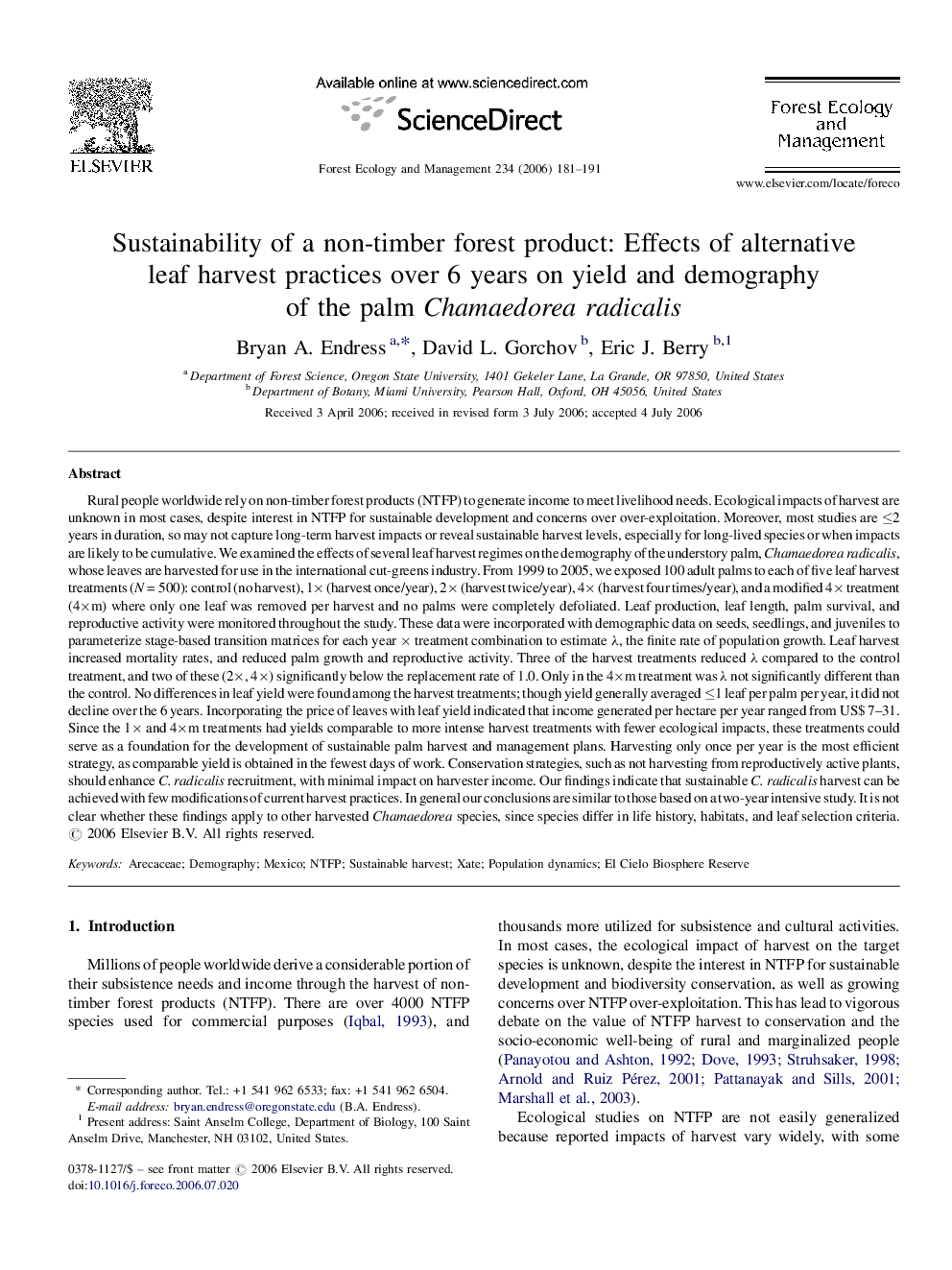| کد مقاله | کد نشریه | سال انتشار | مقاله انگلیسی | نسخه تمام متن |
|---|---|---|---|---|
| 90203 | 159372 | 2006 | 11 صفحه PDF | دانلود رایگان |

Rural people worldwide rely on non-timber forest products (NTFP) to generate income to meet livelihood needs. Ecological impacts of harvest are unknown in most cases, despite interest in NTFP for sustainable development and concerns over over-exploitation. Moreover, most studies are ≤2 years in duration, so may not capture long-term harvest impacts or reveal sustainable harvest levels, especially for long-lived species or when impacts are likely to be cumulative. We examined the effects of several leaf harvest regimes on the demography of the understory palm, Chamaedorea radicalis, whose leaves are harvested for use in the international cut-greens industry. From 1999 to 2005, we exposed 100 adult palms to each of five leaf harvest treatments (N = 500): control (no harvest), 1× (harvest once/year), 2× (harvest twice/year), 4× (harvest four times/year), and a modified 4× treatment (4×m) where only one leaf was removed per harvest and no palms were completely defoliated. Leaf production, leaf length, palm survival, and reproductive activity were monitored throughout the study. These data were incorporated with demographic data on seeds, seedlings, and juveniles to parameterize stage-based transition matrices for each year × treatment combination to estimate λ, the finite rate of population growth. Leaf harvest increased mortality rates, and reduced palm growth and reproductive activity. Three of the harvest treatments reduced λ compared to the control treatment, and two of these (2×, 4×) significantly below the replacement rate of 1.0. Only in the 4×m treatment was λ not significantly different than the control. No differences in leaf yield were found among the harvest treatments; though yield generally averaged ≤1 leaf per palm per year, it did not decline over the 6 years. Incorporating the price of leaves with leaf yield indicated that income generated per hectare per year ranged from US$ 7–31. Since the 1× and 4×m treatments had yields comparable to more intense harvest treatments with fewer ecological impacts, these treatments could serve as a foundation for the development of sustainable palm harvest and management plans. Harvesting only once per year is the most efficient strategy, as comparable yield is obtained in the fewest days of work. Conservation strategies, such as not harvesting from reproductively active plants, should enhance C. radicalis recruitment, with minimal impact on harvester income. Our findings indicate that sustainable C. radicalis harvest can be achieved with few modifications of current harvest practices. In general our conclusions are similar to those based on a two-year intensive study. It is not clear whether these findings apply to other harvested Chamaedorea species, since species differ in life history, habitats, and leaf selection criteria.
Journal: Forest Ecology and Management - Volume 234, Issues 1–3, 1 October 2006, Pages 181–191